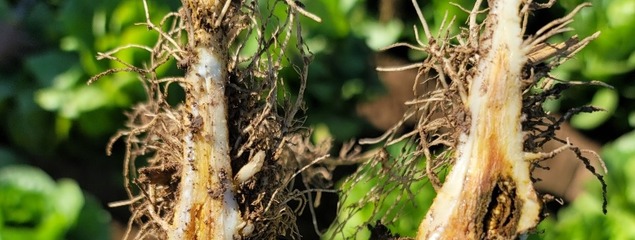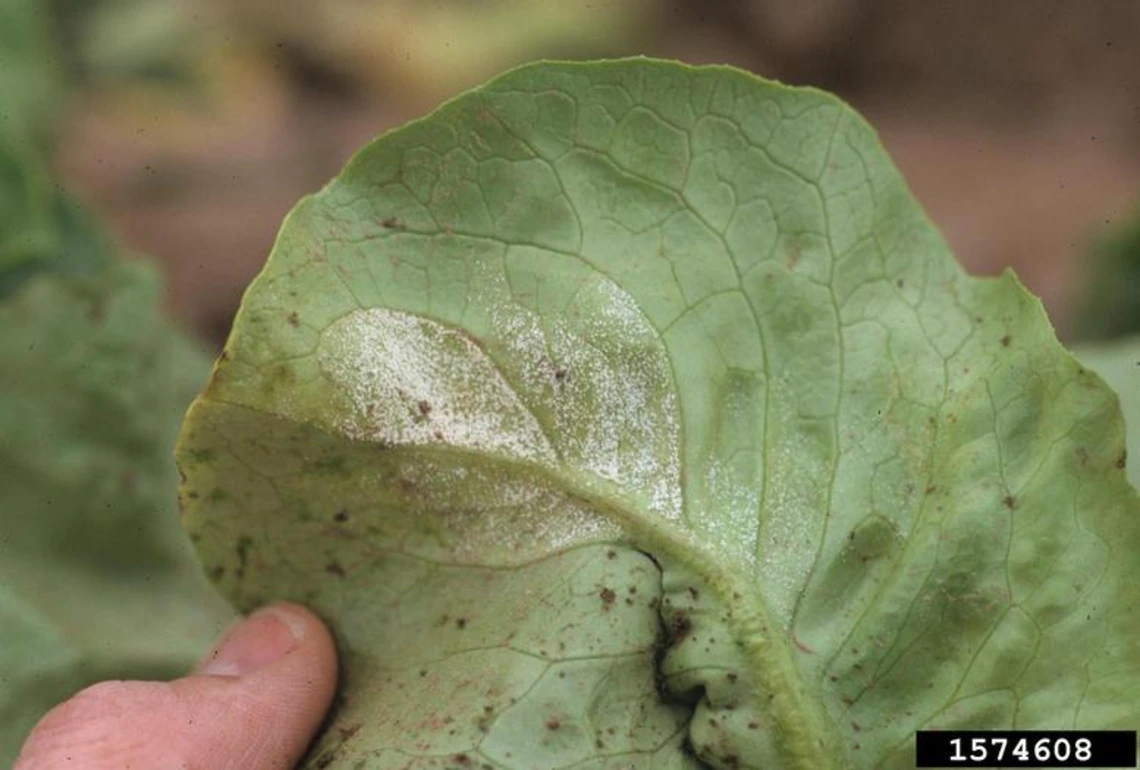
Plant Disease Management
Downy Mildew
Management Practices
Cultural Control
Cultural control of the disease is focused on keeping the lettuce foliage as dry as possible for as long as possible, whether in the field or the greenhouse. Irrigation systems such as drip irrigation are useful for reducing periods of leaf wetness, in contrast to overhead sprinkler irrigation. However, under environmental conditions conducive to disease, such as cool mornings with long periods of nighttime leaf wetness, all fields will be susceptible to disease outbreaks. Under such conditions, crop managers need to be actively scouting crops for the first signs of disease.
Chemical Control
There are a number of fungicides that are effective against downy mildew. Products such as mefenoxam and fosetyl-al have long been used for disease control, but new chemistries are being developed as well. Most studies show the common occurrence of fungicide resistance development in local strains of Bremia, therefore, all product use should be accompanied by a robust program of fungicide resistance management. Several low toxicity products exhibiting anti-fungal properties and/or induction of plant host defense responses, such as lipopeptides, have also been shown to be effective and are being used increasingly. Before using any product to control downy mildew on lettuce, check product labels and restrictions and consult with your local Extension Specialists and Pest Control Advisers.
Biological Control
Although downy mildew is an important pathogen on a number of high-value crops such as grape, small berries, and Brassica spp., there has not been the volume of research on biocontrol measures as has been conducted for chemical control measures. Results from studies conducted to date reveal the most promising products are formulations of different bacterial strains including those of Bacillus and Streptomyces. However, levels of control are not as high as those achieved with conventional chemistries. As such, much research is needed in this area.


